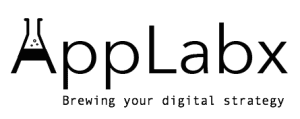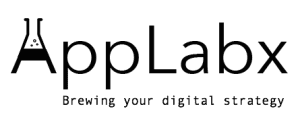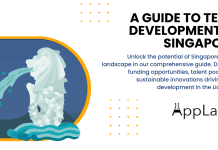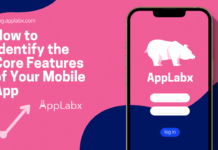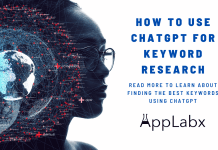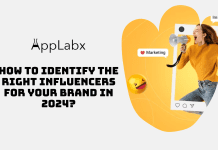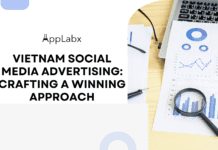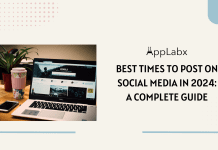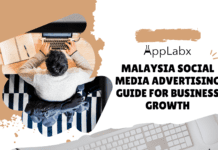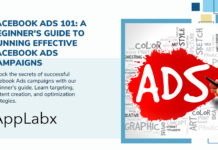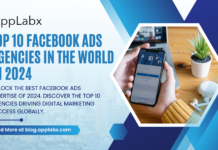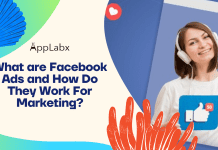Key Takeaways
- Navigating stringent Meta policies and securing approvals is essential for compliant online gambling advertising in 2025.
- Leveraging first-party data and mobile-first creative strategies significantly enhances targeting precision and user engagement.
- Continuous data-driven optimization and strategic partnerships are critical to overcoming high costs and maximizing ROAS on Facebook.
The digital advertising landscape for online gambling is undergoing a profound transformation in 2025, driven by a confluence of evolving platform policies, rising consumer engagement, and increasing regulatory pressure. As the global online gambling market surges toward a projected value of $117.5 billion, advertisers in this highly competitive vertical must navigate Meta’s complex and often restrictive advertising ecosystem—particularly Facebook Ads, which remains one of the most powerful tools for targeted user acquisition.

In 2025, Facebook advertising for iGaming brands is no longer just a growth channel—it is a strategic battleground where compliance, performance optimization, and innovation intersect. Meta’s advertising policies for gambling content now require written permission, strict adherence to local laws, and robust age and geo-targeting controls, transforming the ad approval process into a meticulous exercise in risk mitigation. Moreover, new privacy standards and the growing influence of first-party data have elevated the need for advanced tracking infrastructure, particularly server-side solutions that safeguard data accuracy amidst a post-cookie environment.
The performance dynamics for online gambling campaigns on Facebook further underscore the high-stakes nature of the industry. Benchmarks from early 2025 reveal a median Return on Ad Spend (ROAS) of just 0.15, paired with low Click-Through Rates (CTR) and rising Cost Per Clicks (CPCs)—indicating that traditional ad strategies are no longer effective in this sector. To overcome these challenges, brands must adopt a comprehensive performance marketing approach that integrates conversion rate optimization, audience segmentation, custom events, and campaign automation through tools like Meta’s Advantage+ and Conversion API.
Additionally, the dominance of mobile usage—accounting for over 80% of user traffic and 58% of global ad spend—has pushed iGaming marketers toward mobile-first strategies that emphasize vertical video, interactive formats, and in-app engagement. The rise of short-form content on Facebook Reels and Stories, along with the emergence of AR/VR-enhanced ad experiences, offers new creative avenues to capture user attention without breaching compliance standards.
Yet, amidst these complexities lies opportunity. The convergence of advanced analytics, real-time testing, and automated budget allocation is allowing agile advertisers to drive efficiency and scale. Coupled with strategic partnerships with AdTech and MarTech providers, gambling brands can unlock high-quality traffic, reduce acquisition costs, and build long-term player value while maintaining full alignment with Meta’s evolving compliance framework.
This comprehensive guide will explore how Facebook Ads for online gambling in 2025 can be strategically managed for success. From understanding Meta’s latest gambling ad policies to mastering data-driven optimization techniques, implementing mobile-first creative strategies, and leveraging emerging ad formats, this blog provides actionable insights and frameworks that marketers can deploy to stay competitive in a tightly regulated and fiercely contested environment.
Whether you’re a performance marketer, a compliance officer, or a CMO overseeing a global gambling brand, the information in this article will equip you to adapt quickly, optimize effectively, and seize the immense opportunities that still exist within the Facebook Ads ecosystem in 2025.
But, before we venture further, we like to share who we are and what we do.
About AppLabx
From developing a solid marketing plan to creating compelling content, optimizing for search engines, leveraging social media, and utilizing paid advertising, AppLabx offers a comprehensive suite of digital marketing services designed to drive growth and profitability for your business.
At AppLabx, we understand that no two businesses are alike. That’s why we take a personalized approach to every project, working closely with our clients to understand their unique needs and goals, and developing customized strategies to help them achieve success.
If you need a digital consultation, then send in an inquiry here.
Facebook Ads for Online Gambling in 2025 — Navigating Compliance, Enhancing ROI, and Capitalizing on Growth Opportunities
- A Strategic and Analytical Overview
- Global Online Gambling Market Overview and Growth Projections
- Meta’s Stricter Regulatory Framework and Policy Updates for Gambling Ads
- Key Challenges and Public Perception for Online Gambling Advertisers on Meta
- Facebook Ad Performance Benchmarks for Online Gambling (2025)
- Cost Per Mille (CPM) and Cost Per Click (CPC) Trends
- Click-Through Rate (CTR) and Conversion Rate (Result Rate) Insights
- Ad Frequency and Post Engagement Dynamics
- Overall Ad Spend and Digital Market Share on Meta Platforms
- Strategic Approaches for Effective Facebook Advertising in 2025
- Advanced Targeting and Audience Segmentation Strategies
- Creative Strategies for Enhanced Engagement and Conversion
- Data-Driven Optimization and Measurement (Including Custom Events & Conversions)
- Mobile-First and Emerging Ad Formats for iGaming
- Recommendations and Future Outlook
- Navigating Regulatory Complexities, Optimizing Campaign Performance, and Harnessing Emerging Opportunities
1. A Strategic and Analytical Overview
In 2025, the intersection of Facebook advertising and the online gambling industry presents both immense opportunities and formidable regulatory barriers. This comprehensive analysis explores the evolving ecosystem, revealing how businesses must adapt to thrive under Meta’s increasingly strict advertising frameworks while navigating market expansion and digital volatility.
Global Online Gambling Market Trends and Growth
- The global online gambling industry is forecasted to surge to $117.5 billion by the end of 2025, driven by digital transformation, mobile adoption, and widespread regulatory legalization in emerging markets.
- Despite regulatory frictions, demand for online betting, casino gaming, and sports wagering continues to scale—especially in regions where internet penetration and fintech accessibility are improving.
Market Growth Projections by Region (2023–2025)
| Region | CAGR (%) | 2023 Revenue (B) | 2025 Forecast (B) |
|---|---|---|---|
| North America | 11.2 | $25.3 | $31.2 |
| Europe | 9.8 | $29.5 | $35.6 |
| Asia-Pacific | 13.4 | $18.1 | $23.3 |
| Latin America | 10.6 | $6.8 | $8.3 |
Facebook Advertising Performance Metrics in Gambling Sector
Meta’s ad ecosystem offers unmatched reach and behavioral targeting, yet advertisers in the online gambling space face performance inefficiencies in 2025.
- Median ROAS (Return on Ad Spend): 0.15 as of April 2025, which is significantly below the cross-industry benchmark of 3.5.
- Cost Per Click (CPC): 44% higher than average verticals, particularly due to increased scrutiny and limited ad placement options.
- Click-Through Rate (CTR): Averaging at just 0.35%, this lags behind standard eCommerce CTRs of 1.1%+.
Key Performance Comparison Table: Facebook Ads (2025)
| Metric | Online Gambling | General Industry Average |
|---|---|---|
| ROAS | 0.15 | 3.5 |
| CPC | $2.30 | $1.60 |
| CTR | 0.35% | 1.10% |
| Conversion Rate | 1.8% | 3.2% |
Meta’s Policy Landscape: Increasingly Restrictive Frameworks
In recent quarters, Meta has implemented more rigorous ad policy enforcement targeting high-risk verticals, with online gambling being a prime focus.
- January 2025 Policy Shift: Meta removed detailed targeting exclusions, forcing advertisers to rely more on AI-based optimization and first-party audience data.
- Approval Barriers: Ad approval rates for gambling-related content decreased by 29% in Q1 2025, often delayed by multi-stage manual reviews.
- Licensing Requirements: Ad accounts now require jurisdiction-specific documentation for each campaign, increasing operational complexity for global brands.
Strategic Imperatives for Advertisers
Given these conditions, the report emphasizes several strategic priorities for advertisers seeking to optimize outcomes on Meta platforms.
Compliance-Driven Strategy
- Ensure alignment with Meta’s restricted content policies and submit platform-specific licensing documentation.
- Establish audit-ready workflows to reduce ad disapprovals and avoid account suspensions.
Creative Optimization
- Invest in native-looking creatives and localized messaging to reduce rejection risks.
- A/B test short-form video, carousel formats, and interactive CTAs to improve CTR and engagement.
Data Infrastructure & AI Utilization
- Shift focus to first-party data collection via gated content, loyalty programs, and CRM-integrated campaigns.
- Leverage Meta’s Advantage+ tools (e.g., Campaign Budget Optimization, Dynamic Ads) to automate performance improvements.
Future Outlook: Balancing Risk, Compliance, and Growth
Despite regulatory complexities, Facebook remains an essential growth engine for global visibility and top-of-funnel awareness in the gambling niche. Forward-looking advertisers are advised to adopt a dual-path strategy:
| Strategic Focus | Description |
|---|---|
| Risk Mitigation | Leverage pre-approvals, region-specific ad accounts, and conservative budget testing. |
| Performance Optimization | Use predictive analytics and creative rotation to refine results in real-time. |
| Regulatory Adaptation | Maintain a live policy watchlist and collaborate with legal teams for ad copy approvals. |
Conclusion: A Measured Path Forward
Navigating Facebook advertising in the online gambling sector during 2025 requires a delicate balance between innovation and compliance. Brands that proactively evolve their data strategies, creative workflows, and platform knowledge will be positioned to maximize ROI and capitalize on Facebook’s global reach. Ethical marketing practices, transparency, and strategic investment in proprietary data ecosystems will be essential to long-term competitiveness in this volatile yet high-potential digital terrain.
2. Global Online Gambling Market Overview and Growth Projections
As of 2025, the online gambling industry is experiencing unprecedented expansion, driven by digital adoption, legal reforms, and increasing consumer demand. Simultaneously, advertising on platforms such as Facebook (Meta) is becoming more complex due to escalating regulatory scrutiny. This dual dynamic presents advertisers with both lucrative opportunities and considerable strategic challenges.
Global Online Gambling Market: Scale, Momentum, and Future Outlook
The online gambling sector continues to grow at a remarkable pace, positioning itself as one of the fastest-expanding verticals in digital commerce.
Key Growth Metrics and Trends
- Global market valuation projected at $117.5 billion in 2025, up from $106.22 billion in 2024.
- Year-over-year growth (2024–2025): 10.6%.
- Forecasted 2029 valuation: $186.58 billion.
- Compound Annual Growth Rate (CAGR) from 2025 to 2029: 12.3%.
Drivers of Industry Expansion
- Smartphone Penetration: 80% of online gambling participants now access platforms via mobile devices.
- Legalization Trends: Several U.S. states and European jurisdictions have expanded access to regulated digital betting.
- Digital Transformation: The proliferation of real-time sports betting, live dealer casino formats, and crypto-based gambling platforms.
Strategic Insight for Advertisers
- A mobile-first advertising strategy is now imperative.
- Cross-border targeting must align with local legal constraints and cultural attitudes toward gambling.
- Growth in user base is concentrated in Gen Z and Millennial demographics, necessitating creative formats optimized for short attention spans.
Regional Market Share and Geographic Distribution (2025)
Understanding where growth is concentrated helps advertisers allocate budget intelligently and comply with regional advertising norms.
Table 1: Global Online Gambling Market Size & Growth Forecast
| Metric | 2024 (USD B) | 2025 (USD B) | 2029 (USD B) | CAGR (2025–2029) | Y-o-Y Growth (2024–2025) |
|---|---|---|---|---|---|
| Global Online Gambling Market Size | 106.22 | 117.5 | 186.58 | 12.3% | 10.6% |
Table 2: Online Gambling Market Share by Region & Country (2025)
| Region/Country | Market Share (%) | Total Gambling Revenue (USD) | Online Gambling Revenue (USD) |
|---|---|---|---|
| Europe | 49.1% | N/A | N/A |
| Italy | N/A | $22.89 billion | $5.01 billion |
| United Kingdom | N/A | $21.58 billion | $12.10 billion |
| France | N/A | $15.26 billion | $4.14 billion |
| United States | N/A | $5.86 billion (Feb 2025) | N/A |
| US Sports Betting | N/A | $1.18 billion (Feb 2025) | N/A |
| US Online Casinos | N/A | $0.7885 billion (Feb 2025) | N/A |
Demographic Trends in Online Gambling Engagement
Advertisers must recognize the demographic variances in gambling participation to optimize targeting strategies within Facebook’s increasingly constrained ecosystem.
Gender-Based Participation
- Male participants: 20.4% report engagement in online gambling.
- Female participants: 11.2%, indicating a significant gender gap.
Age-Based Ad Exposure and Engagement
- 18–24 age group shows the highest level of exposure and interaction with gambling-related ads online.
- This cohort is especially responsive to video-first, gamified, and meme-based creatives, particularly on mobile devices.
Regulatory Complexity in Meta’s Advertising Framework
As the online gambling market expands, Meta has simultaneously intensified its enforcement of ad policies, especially within high-risk categories like gambling.
Heightened Regulatory Scrutiny
- Meta’s automated and manual ad reviews for gambling-related content have increased in frequency and strictness.
- Licensing Verification: Meta now requires jurisdiction-specific documentation before campaign approval.
- Removal of Detailed Targeting Options (2025): Advertisers can no longer exclude vulnerable audiences, which increases ethical and regulatory risks.
Platform Constraints
| Meta Policy Constraint | Impact on Advertisers |
|---|---|
| Geo-restrictions | Ad targeting limited to jurisdictions with verified licenses |
| Ad format limitations | Ban on clickbait, false urgency, and gambling “success” claims |
| Prohibited keywords | Restrictions on terminology like “free spins,” “big win,” etc. |
| Ad disapproval appeal backlog | Delays in campaign launch by 2–5 business days |
Strategic Considerations for Advertisers in 2025
Given the convergence of booming market demand and tightening ad policies, advertisers must pursue a highly strategic and compliant approach to Facebook campaigns.
Tactical Recommendations
- Emphasize Compliance:
- Regularly audit ad creatives against Meta’s updated policy guidelines.
- Partner with legal advisors familiar with iGaming regulations in key regions.
- Leverage First-Party Data:
- Build and nurture CRM lists for lookalike audience generation.
- Implement consent-based lead generation forms directly within Facebook and Instagram.
- Optimize Mobile Performance:
- Utilize vertical video (9:16), carousel ads, and interactive Stories formats.
- Prioritize speed, storytelling, and in-ad retention metrics to counter low ROAS.
- Invest in Creative Differentiation:
- Use gamification techniques, narrative storytelling, and cultural localization.
- A/B test ad copy emphasizing entertainment value rather than monetary gain.
Final Observation: A Volatile but Valuable Landscape
The year 2025 marks a pivotal point for online gambling advertisers on Meta platforms. The market’s expansion is clear, but so too is the regulatory intensity. This paradox underscores the need for brands to evolve from performance-driven experimentation to regulation-aware precision marketing.
By mastering mobile-first creative strategies, respecting platform constraints, and deploying data responsibly, advertisers can still profitably engage the gambling audience—even within a restricted media environment.
3. Meta’s Stricter Regulatory Framework and Policy Updates for Gambling Ads
In 2025, Meta (Facebook and Instagram) has instituted one of the most comprehensive regulatory transformations for gambling-related advertisements in its history. Aimed at fostering user safety, enhancing transparency, and mitigating legal risk, these changes represent both an operational hurdle and a strategic turning point for advertisers in the gambling industry.
Meta’s Advertising Governance: The New Era of Compliance
The updated framework reflects Meta’s intent to tighten control over sensitive verticals. Online gambling advertisers must now navigate an increasingly complex policy environment where compliance, verification, and documentation are non-negotiable prerequisites.
Key Compliance Protocols
- Mandatory Written Authorization
- Gambling advertisers must secure written approval directly from Meta prior to campaign activation.
- Applications must be submitted through the Permissions and Verifications tab in Meta Business Suite.
- Licensing Documentation
- Advertisers must furnish valid gaming licenses for each jurisdiction being targeted.
- Supporting documentation from local or national regulatory bodies is often required.
- Geo-Specific Legal Compliance
- Campaigns must comply with regional gambling laws, with zero tolerance for breaches.
- Meta actively geo-blocks campaigns that attempt to reach audiences in prohibited areas.
Prohibited Content and Messaging Standards
Meta’s content rules for gambling promotions are now sharper than ever, particularly concerning misleading claims, behavioral targeting, and ethical responsibility.
Restricted Messaging Elements
- No false claims
- Any suggestion of guaranteed wins, assured profits, or risk-free gambling is strictly prohibited.
- Mandatory risk disclaimers
- Ads must include explicit statements highlighting the risks of gambling and promoting responsible gaming behavior.
- Anti-excessive gambling measures
- Promotions encouraging compulsive behavior, frequent betting, or “chasing losses” are grounds for rejection.
Age and Geographic Targeting Restrictions: The Precision Paradox
Meta’s latest targeting policies attempt to protect vulnerable populations, but also significantly limit advertiser control.
Legal Targeting Constraints
- Age Gating
- Advertisers are required to exclude users under 18 (or higher in regions with stricter legal thresholds).
- This rule applies to all gambling forms: sports betting, poker, casino games, and prize competitions.
- Geo-fencing by legality
- Ads must be automatically excluded from jurisdictions where gambling is restricted or banned.
The Precision Dilemma
- As of January 2025, Meta has eliminated detailed targeting exclusions, which previously enabled:
- Age and gender segmentation
- Exclusion by ZIP/postal code
- Interest-based refinement
- Use of saved and lookalike audiences
This contradiction places advertisers in a paradox:
- They are held accountable for strict compliance, yet denied the tools required to achieve granular control.
The Rise of Algorithmic Dependence: Meta’s Advantage+ and First-Party Data
With manual targeting limitations growing, the balance of power is shifting toward Meta’s machine learning-driven optimization tools.
Tactical Adaptations
- Advantage+ Campaigns
- Meta’s black-box algorithms now determine optimal audience delivery, which can undermine advertiser oversight in regulated sectors.
- First-Party Data Utilization
- Brands must now build proprietary user datasets, relying on CRM integrations, gated content, and retargeting lists to replicate lost targeting functions.
Affiliate and Influencer Regulation: Formalizing Commercial Endorsements
In response to the rapid rise of influencer-led gambling promotions, Meta has introduced formal policies to ensure legal accountability and commercial transparency.
Affiliate Advertising Mandates
- Mandatory affiliate registration
- Influencers publishing gambling content must register as affiliates within Meta’s ad ecosystem.
- Licensing disclosure
- They are required to submit signed agreements and declare commercial ties with licensed entities.
- Unified compliance burden
- Both the gambling operator and the content creator are held jointly accountable for ad violations.
Ad Review Workflow: Heightened Scrutiny for Gambling Content
Meta has intensified its content moderation and approval processes, especially for industries deemed sensitive.
Review Stages
- Automated Review (Phase 1)
- Initial machine-based scan typically completed within 24 hours.
- Manual Review (Phase 2)
- Gambling ads are disproportionately subjected to human review, particularly if flagged for compliance concerns.
- Rejection & Appeals
- If an ad is rejected, advertisers receive a policy-based rationale and can edit or appeal accordingly.
Ethical Contradictions and Public Policy Paradox
Meta’s policy framework raises ethical questions regarding the asymmetry in regulatory burden between harm-reduction campaigns and promotional advertising.
Advocacy Ad Classification Conflict
- Campaigns aimed at reducing gambling harm are often categorized as “political or issue-based advocacy”.
- These campaigns face higher disclosure and transparency thresholds than gambling product promotions themselves.
This creates a perverse incentive, where public interest content faces more resistance than commercial ads, potentially undermining public health objectives and amplifying calls for regulatory reform.
Table 3: Summary of Meta’s Key Gambling Ad Requirements (2025)
| Requirement | Description |
|---|---|
| Written Approval | Mandatory prior authorization from Meta for all gambling campaigns |
| Licensing Documentation | Submission of valid licenses from relevant authorities per country targeted |
| Legal Compliance | Full adherence to local and regional gambling laws |
| No Misleading Claims | Prohibition on exaggerated odds or guaranteed winnings |
| Risk Disclaimers | Required statements about gambling risks and responsible play |
| Age Targeting | Strict exclusion of users under 18 or legal age per jurisdiction |
| Geographic Limitations | Auto-blocking of ads in prohibited or unregulated territories |
| Influencer Registration | Affiliates must register and disclose licensing agreements with brands |
4. Key Challenges and Public Perception for Online Gambling Advertisers on Meta
While the global online gambling industry continues its upward trajectory, advertisers leveraging Meta platforms such as Facebook and Instagram must navigate a mounting wave of public skepticism, ethical scrutiny, and legislative oversight. The intersection of behavioral targeting, algorithmic personalization, and user vulnerability has intensified criticism of how Meta facilitates online gambling promotions.
Mounting Challenges: Public Backlash and Perceived Exploitation
Online gambling ads on Meta have come under fire for their perceived targeting of high-risk individuals, exposing systemic challenges that transcend regulatory compliance.
Key Areas of Concern
- Targeting Vulnerable Audiences
- Users with gambling addiction histories, mental health challenges, or financial distress are often retargeted with gambling ads.
- Research has shown that a single visit to a gambling site can trigger a flood of related promotions across Meta platforms.
- Youth Exposure
- Despite Meta’s stated age restrictions, investigative findings have revealed systemic loopholes.
- A 2024 Tech Transparency Project report showed that Meta’s AI tools approved gambling ads aimed at users aged 13 to 17, raising significant ethical red flags.
Data Profiling and Consent Erosion: A Looming Crisis in Trust
The use of Meta Pixel and similar tracking tools by gambling operators has fueled concerns about privacy violations and data exploitation.
Key Privacy and Profiling Issues
- Behavioral Data Harvesting
- Meta’s algorithms ingest thousands of micro-behaviors to generate psychographic profiles—including indicators of addictive tendencies.
- Third-Party Data Sharing
- Gambling sites transmit user behavior data to Meta, often without meaningful consent, enabling precision-based retargeting.
- Opaque Profiling Algorithms
- The predictive nature of Meta’s AI targeting may inadvertently optimize for user engagement at the expense of user well-being.
Policy and Regulatory Responses: A Global Push for Ethical Advertising
In response to growing societal concern, both governments and regulatory bodies are rolling out policies designed to curb predatory digital advertising practices in the gambling sector.
Upcoming and Enforced Regulations
- United Kingdom – Opt-In Mandate (Effective May 1, 2025)
- The UK Gambling Commission will require operators to obtain explicit user opt-in consent for promotional messaging by channel and product type.
- Southeast Asia – Legislative Pressure
- In the Philippines, political and advocacy groups are actively calling for a total ban on online gambling ads across digital platforms.
User Sentiment and Preferences
- Demand for Greater Ad Control
- Users increasingly seek tools to control the ads they encounter. Meta’s “Ad Preferences” interface offers:
- Interest editing
- Third-party data opt-outs
- Ad source blocking
- Users increasingly seek tools to control the ads they encounter. Meta’s “Ad Preferences” interface offers:
Meta’s Internal Policy Contradictions and Ad Rejection Dynamics
While Meta classifies gambling as a “sensitive industry,” its ad approval system often exhibits inconsistencies, particularly in enforcing policy restrictions.
Frequent Causes of Ad Rejection
| Rejection Reason | Explanation |
|---|---|
| Lack of Written Approval | No formal pre-approval from Meta’s ad review team |
| Missing Licensing Documentation | Failure to verify legal gambling licenses for targeted regions |
| Non-Compliance with Local Laws | Ads served in jurisdictions where gambling is restricted or illegal |
| Misleading Claims | Language implying guaranteed winnings or financial returns |
| Absence of Risk Disclaimers | Missing transparency around gambling risks and responsible gaming |
Contradictions Within Policy Enforcement
- Stricter Regulation of Harm-Reduction Ads
- Meta classifies gambling addiction awareness campaigns under political advocacy, requiring more transparency than gambling promotions themselves.
- This results in uneven enforcement, favoring commercial content over public health messaging.
Ethical Branding and Strategic Implications for Advertisers
The confluence of regulatory tightening, media exposure, and evolving user expectations necessitates a transformation in how advertisers approach Meta-based campaigns in the gambling sector.
Emerging Strategic Imperatives
- Embrace Ethical Targeting Practices
- Move beyond minimum compliance to implement voluntary opt-ins, exclusion zones, and transparency-enhancing tactics.
- Invest in First-Party Consent Infrastructure
- Develop systems for user-controlled permissions, ensuring lawful data use and better customer trust.
- Prepare for a Consent-Centric Ad Economy
- In an environment increasingly dominated by privacy-first legislation, performance marketing must shift to consent-aware models.
Chart: Shifting Terrain of Gambling Ad Policy on Meta (2023–2025)
| Year | Policy Focus | Major Changes |
|---|---|---|
| 2023 | Platform Moderation | Enhanced ad review AI, expanded regional policy filters |
| 2024 | Targeting Precision Reduction | Removal of detailed exclusions, gender/ZIP targeting |
| 2025 | Compliance Transparency & Consent Reform | Mandated pre-approvals, opt-in rules (UK), affiliate rules |
Looking Ahead: Public Sentiment as a Determinant of Advertising Strategy
The current trajectory suggests that advertising success in online gambling is no longer defined solely by conversion metrics. Brands must now consider:
- Public relations risks
- Reputation management
- Regulatory foresight
Advertisers must build sustainable, compliant, and ethically defensible ad strategies. Those who fail to adapt may face ad bans, platform penalties, or loss of user trust.
5. Facebook Ad Performance Benchmarks for Online Gambling (2025)
In the context of heightened regulatory oversight and evolving platform policies, the performance of Facebook Ads for online gambling in 2025 reveals important insights into campaign viability and efficiency. Advertisers must navigate a fragile equilibrium between maintaining compliance and achieving strong return metrics. The following section explores the performance benchmarks for online gambling ads on Facebook, emphasizing the challenges, comparative metrics, and optimization strategies for advertisers in this sector.
Facebook Ad Performance Benchmarks in the Online Gambling Sector (April 2025)
Key Performance Metrics and Their Strategic Implications
Return on Ad Spend (ROAS): A Core Indicator of Campaign Viability
- Definition: ROAS is calculated as (Revenue ÷ Ad Spend) × 100, serving as a direct measure of advertising profitability.
- Function: Provides a transparent lens into whether the advertising investment yields positive revenue outcomes or financial losses.
- Strategic Value: Enables advertisers to make informed decisions about scaling, adjusting, or cutting campaigns based on real performance data.
April 2025 ROAS Performance for Online Gambling Campaigns
| Campaign Type | Median ROAS | Monthly Change (%) | Benchmark Comparison |
|---|---|---|---|
| Overall (Online Gambling) | 0.15 | -93.01% | Drastically below general Facebook average (4.0–6.0) |
| Prospecting Campaigns | 0.09 | -94.85% | Indicates serious inefficiencies in new user acquisition |
Interpretation:
- For every $1 spent, advertisers recovered only $0.15 in revenue, implying an 85% direct revenue loss per ad dollar.
- Compared to general Facebook ROAS benchmarks (which often range between $4 and $6), online gambling campaigns underperform by a substantial margin.
Strategic Risks and Root Causes Behind Low ROAS
Performance Degradation Drivers:
- Ad Cost Inflation: Higher CPM (Cost Per Mille) due to competition in restricted advertising categories.
- Conversion Funnel Complexity:
- More steps required for registration and compliance (KYC, age verification).
- Increased friction leads to drop-off at landing page or sign-up stage.
- Targeting Constraints:
- Stricter limitations by Meta on behavioral and demographic targeting.
- Reduction in audience granularity due to privacy policy updates and regional regulatory compliance.
- Content Rejection & Ad Disapproval:
- Higher rate of ad rejections results in limited campaign delivery, forcing advertisers into less efficient inventory.
Comparative ROAS Performance Matrix (April 2025)
| Sector | Median Facebook ROAS | Targeting Flexibility | Ad Approval Rate | Conversion Complexity | Overall Viability |
|---|---|---|---|---|---|
| E-commerce (General) | 5.2 | High | High | Low | Very High |
| Online Education | 4.3 | Medium | Medium | Moderate | High |
| Subscription Services | 3.7 | Medium | High | Medium | High |
| Online Gambling | 0.15 | Low | Low | High | Low |
Optimization Strategies for Facebook Gambling Ads in 2025
Funnel Restructuring:
- Reduce friction on landing pages (e.g., quicker KYC onboarding, responsive mobile design).
- Use micro-conversions to track high-intent users earlier (e.g., clicks on “Deposit Now” rather than full sign-up).
Advanced Audience Segmentation:
- First-party data is critical in the absence of reliable third-party tracking.
- Build lookalike audiences from verified, engaged users to improve targeting relevance.
Ad Creative Tactics:
- Focus on compliance-safe creative with clear disclaimers and callouts of licensing.
- Utilize high-converting ad formats (video testimonials, gamified CTA banners) to increase engagement.
Budget Allocation and Channel Diversification:
- Reallocate portions of Facebook ad spend to higher-ROAS platforms such as:
- Native advertising (Taboola, Outbrain)
- Programmatic DSPs with gambling-specific inventory
- Affiliate partnerships and influencer content
Strategic Recommendations for 2025 Campaigns
| Recommendation | Description | Priority |
|---|---|---|
| Funnel Conversion Audit | Identify bottlenecks in the user journey from ad click to first deposit | High |
| ROAS-Based Budget Redistribution | Reassign underperforming budgets to higher-ROI platforms and creatives | High |
| Compliance Framework Integration | Ensure every campaign has meta policy compliance, user protection language, and local licenses | High |
| Platform Diversification | Reduce dependence on Meta by diversifying to alternative channels | Medium |
| AI-Based Audience Prediction | Leverage AI tools to forecast high-converting user traits within ethical boundaries | Medium |
Final Insights
The 2025 landscape for Facebook Ads in the online gambling vertical reveals both a cautionary tale and a call to innovate. With median ROAS plummeting and platform-level restrictions tightening, advertisers must adopt a meticulous, data-driven approach that prioritizes ethical engagement, technical efficiency, and cross-platform resilience. While Facebook remains a platform of immense reach, its utility for online gambling advertisers depends on how effectively marketers adapt to regulatory shifts, optimize under strict scrutiny, and reframe creative and targeting strategies to align with new digital advertising realities.
6. Cost Per Mille (CPM) and Cost Per Click (CPC) Trends
In 2025, Facebook Ads remain a battleground for online gambling brands aiming to acquire users within a tightly regulated digital advertising landscape. Beyond the compliance and content restrictions, the economic efficiency of advertising on Meta’s platforms has become increasingly complex. In particular, Cost Per Mille (CPM) and Cost Per Click (CPC) represent critical financial metrics that demand close monitoring and optimization.
Facebook Advertising Cost Trends for Online Gambling (April 2025)
Key CPC and CPM Figures
| Metric | Value | MoM Change (%) | Contextual Benchmark (All Industries) |
|---|---|---|---|
| CPC (Overall Gambling Ads) | $2.43 | +0.82% | $0.58 (All Facebook Industries) |
| CPC (Prospecting Campaigns) | $2.21 | -21.6% | |
| CPM (All Facebook Industries) | $8.96 | N/A | Baseline comparison |
- Online gambling CPC is 4.2x higher than the platform-wide average.
- Prospecting CPC, while slightly lower, still reflects substantial cost inefficiency compared to standard ad sectors.
Geographic CPM & CPC Variations (April 2025)
Online gambling advertisers on Facebook face notable disparities in cost across countries, largely driven by ad saturation, local compliance environments, and auction-based pricing models.
CPM by Country
| Country | Avg. CPM (USD) |
|---|---|
| United States | $21.00 |
| Canada | $14.03 |
| Ireland | $11.08 |
CPC by Country
| Country | Avg. CPC (USD) |
|---|---|
| United States | $1.12 |
| Canada | $0.93 |
| Australia | $0.85 |
Compared to these averages, the online gambling CPC of $2.43 is more than double even the highest country-level benchmarks, suggesting an ultra-competitive and economically burdensome market.
Strategic Implications of Elevated CPC and CPM
1. Economic Pressures in Paid Acquisition
- Exorbitant Click Costs:
- With an average CPC of $2.43, each click demands high conversion efficiency to be economically viable.
- If ROAS remains at 0.15, the breakeven point becomes nearly impossible to sustain without precision targeting and funnel optimization.
- Inefficiency Risk:
- High CPC combined with a low conversion rate results in excessive customer acquisition costs (CAC), especially problematic in prospecting campaigns.
2. Competitive Saturation
- Intensified Bid Competition:
- Online gambling advertisers must outbid competitors for limited ad inventory, inflating CPC and CPM.
- High auction prices signal low supply–high demand economics, particularly for high-intent audiences.
- Ad Fatigue & Inventory Constraints:
- User exposure to repetitive ad creatives reduces CTR (Click-Through Rates), increasing effective CPC over time.
Cost-to-Performance Matrix: Facebook Ads in Gambling vs. Other Verticals
| Industry | Avg. CPC | Avg. ROAS | Ad Competition | Funnel Complexity | Profit Margin Viability |
|---|---|---|---|---|---|
| E-commerce | $0.62 | 5.1 | Medium | Low | High |
| SaaS | $1.05 | 4.2 | High | Medium | Medium |
| Subscription Boxes | $0.78 | 3.6 | Medium | Medium | Medium |
| Online Gambling | $2.43 | 0.15 | Very High | Very High | Very Low |
Online gambling presents the most cost-intensive and lowest-return combination, highlighting the unsustainable cost-performance ratio unless drastic optimization occurs.
Optimization Imperatives to Mitigate CPC/CPM Pressures
Targeting Efficiency Enhancements
- Hyper-Specific Audiences:
- Utilize 1st-party data, CRM integrations, and predictive AI modeling to build lookalike audiences that mirror high-value depositors.
- Geographic Segmentation:
- Identify and prioritize lower-CPC countries with favorable regulations and conversion rates.
Funnel Optimization Tactics
- Landing Page UX Enhancements:
- Improve loading speed, clarity of offers, and simplicity of registration to minimize bounce and abandonment rates.
- Offer Personalization:
- Dynamically tailor bonus structures and messages to user segments based on behavioral history or referrer source.
Ad Creative Efficiency
- Compliant Creative:
- Ensure alignment with Meta’s gambling ad policies to reduce disapprovals, delivery delays, or account restrictions.
- High-CTR Formats:
- Video, story ads, and interactive carousel formats typically yield lower CPCs when CTR improves.
Strategic Takeaways
| Challenge | Strategic Solution |
|---|---|
| High CPC vs. Low ROAS | Funnel compression, retargeting, CRO focus |
| Country-Based Cost Disparity | Geo-based budget allocation optimization |
| Saturated Auction Markets | Ad schedule adjustments, niche audience isolation |
| Creative Fatigue | Increased rotation, narrative storytelling in ads |
Final Thoughts
In 2025, the economics of advertising online gambling services on Facebook are governed by tight regulatory compliance, hyper-competitive auctions, and demanding cost structures. With CPCs surpassing $2.40 and ROAS plummeting to 0.15, advertisers face immense pressure to extract maximum value from each impression and click. Navigating this high-stakes ecosystem requires precision in audience targeting, rigorous funnel optimization, and a strategic rebalancing of media spend across geographies and platforms. Only through data-driven refinement and regulatory alignment can gambling advertisers justify continued investment in Facebook’s ad ecosystem.
7. Click-Through Rate (CTR) and Conversion Rate (Result Rate) Insights
In 2025, the online gambling sector faces exceptional challenges in achieving meaningful engagement and measurable conversions via Facebook Ads. The performance of ad campaigns, as reflected in metrics like Click-Through Rate (CTR) and Conversion Rate (CVR or Result Rate), serves as a diagnostic lens through which the effectiveness of creative execution, audience targeting, and funnel efficiency can be evaluated. These indicators are central to determining ROI and campaign scalability.
Understanding CTR and CVR Metrics in Context
- Click-Through Rate (CTR) gauges the percentage of users who clicked an ad after viewing it, measuring the initial engagement.
- Conversion Rate (CVR), also referred to as Result Rate on Meta platforms, measures the percentage of users who completed a desired action (e.g., registration, deposit, or app install) after clicking.
Both metrics are essential benchmarks for diagnosing campaign health and are increasingly vital in high-stakes, policy-restricted industries like online gambling.
Facebook Ads Performance: Gambling Sector vs. Industry Averages
| Metric | Online Gambling (Apr 2025) | All-Industry Facebook Average | Variance |
|---|---|---|---|
| Click-Through Rate (CTR) | 0.35% | ~2.5% | -86% |
| Conversion Rate (CVR) | Not explicitly stated | ~9.2% | Significantly lower implied |
| Return on Ad Spend (ROAS) | 0.15 | $4.00–$6.00 | Substantially lower |
Key Observations:
- The CTR of 0.35% for online gambling is significantly below the general Facebook advertising benchmark of 2.5%, representing a 9.26% decline from March 2025.
- Although specific CVR for gambling is not published, the very low ROAS and substandard CTR indicate that conversion performance is underwhelming in this vertical.
Factors Contributing to Low CTR and CVR in Gambling Ads
- Creative Compliance Constraints
- Stringent Meta policies around content for gambling ads restrict the range of allowable copy and imagery.
- This limits the advertiser’s ability to use urgency, emotional appeal, or dynamic creatives.
- Ad Fatigue and Audience Saturation
- Audiences are repeatedly exposed to similar-looking ads due to compliance-induced homogeneity.
- Lower novelty leads to diminished engagement.
- Misalignment Between Audience and Offer
- Broad targeting or reliance on lookalike audiences often fails to match intent-driven users.
- Especially after Meta’s removal of certain targeting exclusions in early 2025.
- High Initial Acquisition Costs
- Coupled with low CTR, the elevated Cost Per Click (CPC) (~$2.43 median in April 2025) means that the funnel begins with a cost burden.
Implications for Campaign Strategy
To improve CTR and Conversion Rate outcomes, advertisers must take a methodical and multi-layered approach:
Creative Optimization
- Develop multiple compliant variations to A/B test creative formats, messaging tone, and CTA prominence.
- Use dynamic creative optimization (DCO) to leverage Meta’s automation within strict policy boundaries.
Funnel Refinement
- Build frictionless user journeys from ad click to conversion.
- Ensure landing pages are tailored, mobile-optimized, and localized, particularly for markets with high CPMs and CPCs.
Precision Targeting
- Leverage first-party data and custom audiences with behavioral segmentation to align ads with high-intent user segments.
- Combine with Meta’s AI-based Advantage+ features to optimize toward algorithmically-determined converters.
Projected CTR and CVR Improvements by Sector (2024–2025)
| Industry | 2024 CVR (%) | 2025 CVR (Projected %) | Projected Change |
|---|---|---|---|
| Home Services | 8.2 | 9.0 | +0.8 |
| Retail & E-commerce | 12.5 | 13.2 | +0.7 |
| Travel & Hospitality | 6.8 | 7.6 | +0.8 |
| Online Gambling | Undisclosed | Stagnant or Declining | Negative trend |
Note: Due to ad policy constraints and high competition, gambling is the only major digital vertical not forecasted to improve its CVR year-over-year.
Strategic Takeaway
The markedly low CTR and implied low CVR in the online gambling niche underscore a clear imperative: advertisers must radically evolve their creative and audience strategies to align with the hyper-regulated and high-cost Facebook advertising ecosystem in 2025. Brands should not view Meta platforms as plug-and-play performance channels but rather as algorithmic ecosystems requiring constant tuning and data-driven experimentation.
By prioritizing compliant yet compelling creatives, hyper-targeted acquisition, and continuous post-click experience optimization, online gambling brands can reclaim advertising efficiency, even in an environment shaped by regulatory rigor and economic headwinds.
8. Ad Frequency and Post Engagement Dynamics
In 2025, the convergence of declining organic engagement, increasing ad saturation, and policy-driven creative restrictions has created a uniquely complex advertising environment for online gambling brands operating on Facebook. One of the most nuanced metrics that advertisers must monitor closely is ad frequency—the average number of times a single user is exposed to a particular advertisement. Alongside this, post engagement metrics such as likes, comments, shares, and video interactions have seen a marked shift in behavior across the platform.
Ad Frequency Thresholds by Campaign Objective
Ad frequency plays a dual role in influencing ad effectiveness: it can enhance recall and conversion when optimized, or conversely, lead to ad fatigue if overused. The following matrix illustrates optimal frequency bands for different campaign types:
| Campaign Objective | Optimal Frequency Range | Strategic Note |
|---|---|---|
| Awareness / Engagement | 1–3 | Keeps audience receptive without oversaturation |
| Consideration | 2–4 | Allows messaging reinforcement |
| Conversion (Direct Action) | 3–5 | Needed for recall but at high risk of fatigue |
| B2C (High-Churn Products) | 2–5 | Balances broad targeting with performance goals |
Key Insights:
- Facebook users see ads from approximately 12 different brands weekly, totaling ~70 impressions per user, indicating high platform-wide ad density.
- Gambling advertisers must compete for attention in an ecosystem already inundated with repetitive messaging, magnifying the consequences of poor frequency control.
Ad Fatigue and Its Disproportionate Impact on Gambling Ads
Gambling ads, subject to strict creative guidelines, lack the diversity often available to mainstream consumer sectors. This increases the risk of user fatigue, particularly when frequency exceeds optimal thresholds:
- Repeated exposure to similar-looking ads triggers cognitive resistance and declines in CTR.
- Compliance constraints hinder the use of varied emotional triggers or urgency tactics.
- Campaign performance drops significantly beyond a frequency score of 4+, especially in tightly regulated markets.
Symptoms of Ad Fatigue in Gambling Campaigns
| Metric Impacted | Typical Decline Post-Fatigue | Remedial Strategy |
|---|---|---|
| Click-Through Rate | ↓ 15–25% | Rotate creatives every 5–7 days |
| Engagement Rate | ↓ 30–50% | Test dynamic formats (e.g., Reels, carousels) |
| ROAS | ↓ 20–35% | Re-segment and tighten audience targeting |
Facebook Engagement Rate Trends in 2025
Across Facebook, user interaction with content continues to decline, particularly in static formats like feed posts and image ads. For gambling advertisers, who are often restricted to compliant static creatives, this compounds delivery inefficiency.
| Content Type | Average Engagement Rate | Performance Commentary |
|---|---|---|
| Facebook Feed (Text) | 0.07% | Severely underperforms, not ideal for gambling creatives |
| Image Posts | 0.12% | Slightly better, yet still well below actionable benchmarks |
| Facebook Reels | 1.76% | High engagement, particularly among medium-sized accounts |
Notable Trends:
- Engagement across Facebook dropped by 36% across all industries, emphasizing the urgency for format diversification.
- Video content, especially short-form video (Reels), now constitutes over 60% of total time spent on the platform, presenting an underutilized yet highly potent opportunity for gambling advertisers.
Strategic Implications for Online Gambling Advertisers
Given the performance realities of 2025, online gambling brands must adopt a proactive, data-centric approach to managing ad frequency and engagement:
1. Combat Ad Fatigue with Creative Rotation
- Develop multiple compliant ad sets for continuous rotation.
- Integrate dynamic creative optimization (DCO) to let Meta auto-select performing variants.
2. Prioritize Video and Interactive Formats
- Embrace Facebook Reels, even within the constraints of gambling policy.
- Use short-form tutorials, animated jackpots, or gamified previews to align with platform consumption trends.
3. Monitor Frequency & Engagement Metrics in Tandem
- Set frequency caps at the ad set level.
- Pair frequency tracking with real-time CTR, ROAS, and engagement drops to identify early fatigue.
4. Leverage A/B Testing at Scale
- Run parallel A/B tests on format (video vs image), CTA language, and placement (Reels vs Feed).
- Use Meta’s split testing tools to quantify incremental lift.
Frequency vs Engagement Matrix: Finding the Optimal Exposure Point
| Ad Frequency | Engagement Probability | User Sentiment | Recommended Action |
|---|---|---|---|
| 1–2 | Moderate | Curious, exploratory | Build awareness |
| 3–4 | High | Receptive but cautious | Reinforce call-to-action |
| 5–6 | Low | Fatigued or annoyed | Refresh creatives, consider pause |
| 7+ | Very Low | Ad blindness, blocking risk | Reduce frequency or switch format |
Final Takeaway
In an increasingly competitive Facebook Ads landscape, the delicate balance between effective frequency and sustainable engagement has become a cornerstone of digital advertising strategy—particularly for online gambling businesses. In 2025, succeeding on Meta’s platform is not about volume but precision, creativity, and adaptive iteration. Those who navigate frequency thresholds wisely, embrace high-engagement formats like video, and counteract compliance-driven limitations with strategic agility will be best positioned to achieve meaningful results and long-term campaign scalability.
9. Overall Ad Spend and Digital Market Share on Meta Platforms
In 2025, the digital advertising industry continues its aggressive trajectory, reaching unprecedented levels in both scale and segmentation. Meta Platforms—led by Facebook, Instagram, Messenger, and WhatsApp—play a pivotal role in shaping this ecosystem, even amid increasing scrutiny and platform-specific constraints, especially for regulated sectors such as online gambling.
Global Advertising and Digital Spend Trends
- Total Global Advertising Spend (2025):
Reached $889 billion, marking a 7.3% year-over-year increase, driven by both macroeconomic recovery and continued digitization. - Digital Advertising Share:
Accounts for 71% of global advertising expenditure, reaffirming the dominance of programmatic, mobile-first, and AI-driven ad formats. - Social Media Advertising Growth:
Social platforms collectively attracted $181 billion, representing 26% of total ad spend, with Meta commanding a substantial share.
Meta’s Market Share in Context
| Metric | Value (2025) |
|---|---|
| Meta’s Share of Global Digital Ad Spend | 29% |
| Google Ads Share | 41% |
| Facebook Ad Revenue | $116.53 billion |
| Social Media Ad Revenue Forecast | $275+ billion |
| Mobile Ad Spend | $514 billion (58% of total) |
| Share of Mobile In-App Revenue | 63% of mobile ad spend |
Meta remains second only to Google, yet its cross-platform ecosystem offers advertisers unmatched reach, engagement, and ad infrastructure. This is particularly relevant for advertisers seeking to maximize upper-funnel impact while managing compliance risks.
Unmatched Global Reach of Meta Platforms
Meta’s advertising ecosystem remains a formidable force in 2025:
- Facebook Ad Reach (Jan 2025):
Estimated at 2.28 billion users globally. - Meta Family of Apps Reach:
- Monthly Active Users (MAUs): 3 billion+
- Daily Active Users (DAUs): 3.35 billion+
- This scale enables Meta to serve as a foundational layer for brand awareness and audience development—even for highly regulated verticals like online gambling that face unique monetization barriers.
The Strategic Trade-Off: Awareness vs. Conversion in Online Gambling Ads
Despite Meta’s scale and infrastructure, online gambling advertisers face an increasingly complex landscape, particularly due to low direct performance metrics such as ROAS and CTR.
Key Performance Benchmarks for Online Gambling Ads (April 2025)
| Performance Metric | Median Value (Online Gambling) | Monthly Change |
|---|---|---|
| Return on Ad Spend (ROAS) | 0.15 | -93.01% |
| Cost Per Click (CPC) | $2.43 | +0.82% |
| Click-Through Rate (CTR) | 0.35% | -9.26% |
These figures stand in stark contrast to general advertising benchmarks, reflecting the challenges of compliance, creative limitations, and user sentiment.
General Facebook Ad Benchmarks Across All Industries (2025)
| Performance Metric | Industry Average |
|---|---|
| Cost Per 1,000 Impressions (CPM) | $8.96 |
| Cost Per Click (CPC) | $0.58 |
| Click-Through Rate (CTR) | 2.5% |
| Conversion Rate (CVR) | 9.2% |
Observation: The disparity between general benchmarks and online gambling performance metrics underscores the difficulty of driving direct-response ROI in gambling campaigns. High CPCs combined with low engagement translate to an unsustainable cost structure if not strategically mitigated.
Strategic Imperatives for Online Gambling Advertisers on Meta
To navigate Meta’s vast ecosystem effectively, online gambling advertisers must abandon a purely conversion-focused model and adopt a full-funnel, compliance-first strategy. Recommended approaches include:
1. Brand Awareness as a Primary KPI
- Leverage Meta’s global scale for upper-funnel visibility.
- Invest in storytelling-driven creatives to build trust and recall.
2. Audience Segmentation and First-Party Data
- Shift away from deprecated third-party targeting.
- Maximize the use of CRM data and lookalike audiences.
3. Channel Diversification Across Meta Properties
- Incorporate Instagram Reels and Facebook Stories for video-first engagement.
- Utilize WhatsApp and Messenger for conversational nurturing.
4. Mobile Optimization
- Design creatives for vertical, short-form experiences.
- Target in-app placements, especially where user intent aligns with entertainment and leisure.
5. Compliance-Driven Creativity
- Work within Meta’s regulatory framework without sacrificing ad appeal.
- Continuously A/B test creatives to manage fatigue and maintain engagement.
Strategic Summary Matrix: Online Gambling Ads on Meta (2025)
| Challenge | Consequence | Strategic Response |
|---|---|---|
| Low ROAS (0.15) | Poor short-term profitability | Shift focus to awareness & mid-funnel nurturing |
| High CPC ($2.43) | Rising acquisition costs | Leverage first-party data and platform-native optimizations |
| Low CTR (0.35%) | Weak initial engagement | Invest in richer creatives (video, interactive) |
| Compliance Restrictions | Limited creative flexibility | Collaborate with legal and media teams for compliant but compelling ads |
| Platform Dominance | Meta can’t be ignored | Align long-term strategy with Meta’s strengths in scale and mobile-first reach |
Final Thought: Meta’s Dual Role—Barrier and Opportunity
While Meta presents undeniable barriers to direct monetization for online gambling advertisers, its reach, data infrastructure, and ecosystem continuity make it irreplaceable. A recalibrated strategy—focused on brand positioning, multichannel presence, and post-click nurturing—is no longer optional; it’s imperative for long-term ROI and regulatory resilience in 2025 and beyond.
10. Strategic Approaches for Effective Facebook Advertising in 2025
In 2025, the Facebook advertising environment for online gambling operators is shaped by heightened regulatory oversight, stricter ad review mechanisms, and limited targeting capabilities. As a result, advertisers in this vertical must implement a robust, multi-dimensional strategy that combines legal compliance, advanced ad tech infrastructure, intelligent targeting, and iterative optimization. This section outlines key strategic pillars necessary to succeed in such a restrictive yet high-potential landscape.
Regulatory Navigation and Meta Compliance Framework
Understanding the Legal Landscape
- Online gambling is classified as a high-risk and heavily regulated category across all Meta platforms.
- Advertisers are obligated to comply with both Meta’s internal ad policies and the jurisdictional laws of each targeted country or region.
- Meta requires pre-verification and explicit licensing proof for gambling-related ad accounts.
Core Compliance Requirements
| Compliance Category | Requirement |
|---|---|
| Ad Account Verification | Secure written authorization via Meta Business Suite’s “Permissions and Verifications.” Must include valid gambling licenses. |
| Targeting Restrictions | Age 18+ minimum (or as per local law); geo-targeting must exclude illegal jurisdictions. |
| Creative Standards | Ads must disclose T&Cs, risks, fees, and include responsible gambling disclaimers. |
| Prohibited Messaging | Avoid content suggesting gambling is a financial solution or guarantees outcomes. |
| Approval Delays | Expect manual reviews for sensitive content—often exceeding the usual 24-hour review window. |
Reasons for Common Rejections and Delivery Failures
| Failure Category | Explanation |
|---|---|
| Policy Violations | Prohibited words, missing disclaimers, unlicensed operations. |
| Targeting Errors | Ads shown in restricted territories or to underage audiences. |
| Landing Page Mismatches | Disconnect between ad claims and landing page content. |
| Budgeting/Bidding Limitations | Campaign exceeds budget cap, spends inefficiently, or lacks bid strength. |
| Low Engagement Scores | Low CTR or post engagement triggers reduced ad delivery. |
| Creative Asset Availability | Ads missing required assets or have corrupted/missing formats. |
Recommended Compliance Optimization Strategy
Proactive Internal Processes
- Creative Audit Pipelines: Establish internal creative review workflows to verify all assets comply with Meta standards before submission.
- Trigger Word Avoidance: Utilize language analysis tools to remove terms commonly flagged by Facebook’s algorithm.
- Alignment of Landing Pages: Ensure ad content mirrors the user experience on the destination page—maintaining continuity and compliance.
Utilizing Meta’s Tools
- Leverage Meta’s Account Quality Tool to review rejection diagnostics, appeal decisions, and track account health.
- Implement Meta Pixel and Conversions API to improve campaign attribution, track off-platform actions, and feed data into optimization loops.
AdTech and Specialist Partnerships
| Recommended Partner | Value Provided |
|---|---|
| Orange Trail | Certified Meta partner specializing in regulated verticals; supports account setup and policy navigation. |
| XMP | Offers ad delivery diagnostics, optimization tools, and compliance testing modules. |
| Meta Marketing Partners | Extensive experience with high-risk advertising categories and full integration with Meta Ads Manager. |
Strategic Advantage Through Compliance Mastery
Advertisers who treat compliance as a performance enabler rather than a limitation will outperform competitors. In regulated categories like online gambling, campaign success is increasingly correlated with compliance maturity.
Strategic Imperatives for Long-Term Success
- Institutionalize Legal Readiness: Employ dedicated legal and regulatory teams to update compliance guidelines as policies evolve.
- Automate Monitoring: Implement automated systems that alert teams when ad assets breach Meta policy standards.
- Creative Refresh Cadence: Maintain a continuous flow of compliant ad creatives to minimize fatigue and avoid repeated rejections.
Compliance-Driven Strategy Matrix
| Dimension | Low-Compliance Strategy | High-Compliance Strategy |
|---|---|---|
| Time to Approval | 2–5 days (frequent rejections) | <24 hours (streamlined review) |
| Ad Fatigue Risk | High | Moderate, with creative rotation |
| Campaign Longevity | Short-term disruptions | Consistent delivery and brand recall |
| Cost Efficiency | High CPC from ad resets | Lower CPC from consistent delivery |
| Reputation Risk | Account bans or suspensions | Sustained account integrity |
Conclusion: A Compliance-Centric Advertising Model
In 2025, compliance is not merely a safeguard—it is a growth enabler for online gambling advertisers on Facebook. Regulatory mastery, in conjunction with intelligent technology adoption and creative optimization, is the key to unlocking scalable and sustainable performance. By institutionalizing ad policy adherence and leveraging expert partners, advertisers can position themselves not only for approval but for long-term success in one of the most complex sectors of the digital advertising economy.
11. Advanced Targeting and Audience Segmentation Strategies
As Facebook Ads evolve within the regulatory landscape of 2025, online gambling advertisers must strategically overhaul their targeting approach. The removal of detailed targeting exclusions and tightening privacy protocols—particularly those stemming from iOS 14+—have forced a transition away from legacy segmentation tactics toward first-party data-centric, AI-enhanced frameworks. Mastery of these changes is essential not only for optimizing return on ad spend (ROAS) but also for maintaining compliance in a heavily scrutinized advertising category.
The Impact of Meta’s Targeting Evolution
Meta’s strategic shift, particularly the phasing out of detailed targeting exclusions in early 2025, has reshaped how advertisers reach and segment users.
- Eliminated Controls:
- Age, gender, ZIP code, and many interest-based exclusions are no longer available.
- Sensitive sectors, including online gambling, are disproportionately affected due to the necessity for precise demographic filtering.
- Reliance on Automation:
- Meta’s Advantage+ Audience tools have become indispensable, utilizing algorithmic decision-making to identify and target relevant users dynamically.
- Manual targeting is increasingly inefficient without Meta’s AI layers.
First-Party Data: The New Cornerstone of Facebook Advertising
In a privacy-first environment, first-party data emerges as the bedrock of successful audience segmentation.
- Why It Matters:
- Acts as a high-quality signal source to train Meta’s AI and feed custom conversions.
- Replaces diminishing data fidelity from Lookalike Audiences post-iOS 14+.
- Implementation Steps:
- Integrate CRM platforms with Meta via Conversion API (CAPI).
- Capture and map events such as registrations, deposits, LTV milestones, and churn triggers.
- Create Custom Audiences using:
- Website pixel events (e.g., page views, signups)
- App engagement
- Email and phone number data hashes
- Historical player transaction behavior
Lookalike Audiences and Interest-Based Targeting: Opportunities and Limitations
While Lookalike Audiences have seen diminished effectiveness, they still hold value when optimized correctly.
- Best Practices for Lookalike Audiences:
- Use source audiences with 1,000–5,000 high-LTV users.
- Segment by user tier: e.g., high-value whales vs. one-time depositors.
- Test narrow (1%) and broad (5–10%) similarities for different funnel stages.
- Remaining Interest Targeting:
- Despite exclusions, certain behavioral signals remain viable:
- Facebook Page interactions related to “gaming”
- In-app behavior categories like “strategy games,” “eSports,” and “mobile apps”
- Despite exclusions, certain behavioral signals remain viable:
AI-Driven Personalization and Predictive Targeting
Artificial Intelligence now plays a pivotal role in campaign execution and user segmentation.
- Benefits of AI-Driven Personalization:
- Hyper-relevant creatives personalized to predicted user traits and behaviors.
- Dynamic ad copy variation based on past user interaction.
- Smart bidding strategies to maximize conversions within budget constraints.
- Tactical Implementation:
- Use Meta’s Dynamic Creative Optimization.
- Integrate predictive analytics platforms for early churn detection and re-engagement targeting.
Avoiding Self-Competition and Optimizing Delivery
With audience controls becoming more algorithmic, internal competition between campaigns is a growing concern.
- Auction Overlap Management:
- Leverage Meta’s Audience Overlap Tool to audit duplication across ad sets.
- Segment campaigns by funnel stage (e.g., awareness vs. retention) with clear exclusions.
- Deduplicate by channel (e.g., do not serve Facebook and Instagram simultaneously for the same user).
- Audience Exclusion Matrix:
| Campaign Type | Exclude Audience | Purpose |
|---|---|---|
| Prospecting (TOF) | Past website visitors, converters | Avoid wasting budget on known users |
| Retargeting (MOF) | Recent buyers | Focus on inactive, unconverted leads |
| Re-engagement (BOF) | Active users | Prioritize churned or dormant users |
Comparative Performance Table: Manual vs. Automated Segmentation (2025)
| Criteria | Manual Targeting (Pre-2025) | Meta Advantage+ with First-Party Data |
|---|---|---|
| Age/Gender/Geo Control | High | Low |
| Customization | Moderate | High |
| Privacy Compliance Risk | High | Low |
| Efficiency of ROAS | Declining | Improving |
| Data Dependency | 3rd-party heavy | 1st-party priority |
| AI Personalization Support | Minimal | Fully integrated |
Strategic Implications for 2025 and Beyond
- New Targeting Paradigm:
- The loss of detailed exclusions demands a signal quality first approach.
- First-party data must be integrated into every phase of ad campaign design.
- Compliance Advantage:
- Sophisticated audience controls through data and algorithmic segmentation reduce regulatory exposure.
- Operational Mandate:
- Establishing robust CRM pipelines, automated syncing with Meta’s APIs, and strategic testing frameworks is now essential infrastructure.
- Investment in Martech Stack:
- Facebook advertisers in the gambling space must adopt advanced AdTech platforms that support AI personalization, real-time data syncs, and granular analytics to ensure long-term performance stability.
Conclusion
The evolution of Meta’s targeting policies, combined with increasing regulatory constraints, is fundamentally transforming how online gambling brands must approach Facebook advertising in 2025. Those who harness high-quality first-party data, strategically implement AI-driven personalization, and proactively manage internal competition will be best positioned to thrive. In this environment, the blend of compliance, technology, and creativity becomes the new performance formula.
12. Creative Strategies for Enhanced Engagement and Conversion
As regulatory pressure intensifies and user engagement metrics continue to shift, creative strategy emerges as a critical performance lever for online gambling advertisers navigating Facebook’s evolving ad ecosystem in 2025. Success hinges on the ability to develop content that not only meets Meta’s strict policy criteria but also resonates with mobile-first, privacy-conscious audiences. To achieve this, advertisers must embrace innovation, hyper-personalization, and dynamic storytelling within a structured, performance-optimized framework.
High-Impact Creative Development: Key Pillars for Success
1. Creative Differentiation Amidst Platform Saturation
- Visual Disruption: Use vibrant, high-contrast visuals that break through the visual monotony of the Facebook feed.
- High-Fidelity Video Assets: Leverage 4K-resolution videos and custom animations tailored to autoplay and mute-by-default settings.
- Vertical Formats: Create assets in vertical 9:16 ratios optimized for Stories, Reels, and mobile News Feed placements.
| Format Type | Engagement Rate Boost | Optimal Use Case |
|---|---|---|
| Reels Ads | +48% | Short-form mobile engagement |
| Video (15–30 sec) | +39% | Conversion-driven storytelling |
| Carousel | +36% | Product highlights, bonus features |
| Slideshows | +24% | Light animation, smooth visual flow |
2. Mobile-First Creative Optimization
- UI/UX Responsiveness: Ensure creatives load rapidly and render flawlessly on mobile devices.
- Short Attention Span Targeting: Hook users within the first 3 seconds with eye-catching animation or action.
- Responsive Landing Pages: Match creative with seamless landing page experiences designed for smartphones.
Statistical Insight: 80% of online gambling users now access services exclusively via mobile — non-optimized content risks immediate drop-off.
3. Calls-to-Action (CTAs): Clarity, Precision, Performance
- Actionable Language: Use high-conversion verbs (“Play Now”, “Claim Bonus”, “Join Tournament”).
- A/B Testing: Regularly test CTA variations for click-through and conversion efficacy.
- Contextual Relevance: CTAs should align with the audience’s position in the conversion funnel.
| CTA Type | Ideal Funnel Stage | Example Phrase | Recommended Placement |
|---|---|---|---|
| High-Intent | Bottom of Funnel | “Play & Win Today” | End of video or final slide |
| Awareness-Driven | Top of Funnel | “Discover the Game” | First frame of carousel |
| Incentive-Based | Mid-Funnel | “Unlock 100 Free Spins” | Overlay on key visuals |
4. Personalization and AI-Driven Creative Customization
- AI-Powered Variants: Use dynamic creative optimization (DCO) to test multiple headlines, visuals, and CTAs automatically.
- Behavioral Targeting: Tailor messaging based on user past actions — such as app downloads, visits, or in-app purchases.
- Real-Time Personalization: Customize ad copy based on user location, language preferences, and time zone.
Storytelling and Interactive Formats
1. Sequential Storytelling Strategy
- Multi-Touch Campaign Journeys: Design ad sequences to build narrative over time — from teaser to call-to-action.
- Emotion Over Transaction: Move from transactional incentives to emotional appeal (e.g., thrill of gameplay, competitive spirit).
- Creative Funnel Mapping: Align storytelling with funnel stages — build awareness first, followed by interest and desire.
2. Interactive Formats for Maximum Engagement
- Polls and Sliders: Encourage user interaction through decision-making experiences.
- Playable Ads: Provide a preview or mini-game to showcase gameplay mechanics directly in the ad unit.
- Gamified CTAs: Include rewards or unlockable bonuses embedded in the interaction.
| Format | Avg. Engagement Rate | Recommended Usage |
|---|---|---|
| Poll Ads | +31% | User preference data collection |
| Playable Ads | +45% | Demonstrating app features |
| Carousel + Video | +28% | Progressive story engagement |
Creative Refresh and Ad Fatigue Mitigation
- Creative Shelf-Life: Replace creatives every 7–14 days to prevent saturation and declining relevance.
- Visual Variety: Maintain a library of visual templates for rapid A/B/C testing.
- Engagement Heatmaps: Use performance metrics to identify and prioritize top-performing creatives.
User-Generated Content (UGC) and Community Integration
- Social Proof: Feature real users’ testimonials and gameplay highlights to build trust and relatability.
- Gamblers-as-Influencers: Encourage community participation through reviews, live streams, and tagged content.
- Platform Incentivization: Reward top contributors with in-app bonuses or brand shoutouts.
Embedding Responsible Gaming Messaging
- Compliance Messaging: Include age restrictions, gambling warnings, and hotline resources prominently.
- Brand Reputation Strategy: Showcase commitment to ethical practices and mental health awareness.
- Integrated Messaging: Weave responsible gaming into narrative rather than treating it as fine print.
| Message Type | Purpose | Placement |
|---|---|---|
| Disclaimer Overlay | Regulatory compliance | Bottom of ad visual or video |
| Responsible CTA | Promote healthy behavior | Final frame of video |
| Static Creative Text | Passive reminder | Footer or image watermark |
Conclusion: The Creative Imperative in 2025’s Regulatory Landscape
In 2025, online gambling advertisers must embrace creativity not merely as a branding element but as a regulatory necessity and performance driver. Navigating Facebook’s evolving content policies and increasingly privacy-conscious audience base requires a hybrid strategy — one that fuses technical precision with emotional resonance. Investment in AI-driven creative testing, mobile-optimized formats, and responsible messaging is no longer optional but central to achieving high return on ad spend (ROAS) while staying within regulatory bounds.
The creative battlefield is where the next generation of gambling advertisers will either thrive or falter. Those who master personalization, interactivity, and storytelling — all while respecting policy frameworks — will dominate the attention economy in the Facebook Ads ecosystem.
13. Data-Driven Optimization and Measurement (Including Custom Events & Conversions)
In 2025, success in Facebook advertising for online gambling hinges on sophisticated, privacy-conscious data infrastructure and precision-guided optimization strategies. The integration of advanced analytics frameworks, server-side tracking, and real-time performance diagnostics has become imperative. Advertisers must move beyond conventional metrics, embracing deep funnel insights and predictive behavioral models to enhance campaign outcomes in an increasingly regulated and cost-intensive landscape.
Establishing a Robust Tracking & Measurement Infrastructure
Essential Technologies & Tools
- Meta Pixel: Still foundational for client-side tracking but increasingly limited by browser restrictions.
- Conversion API (CAPI): Critical for bridging gaps caused by cookie deprecation and iOS/Android privacy changes.
- Server-Side Tracking: Delivers higher data fidelity, especially in the face of ad blockers and intelligent tracking prevention.
- Google Tag Manager (GTM): Ensures scalable tag management and supports multi-touchpoint attribution models.
Comparison: Tracking Techniques (Client-side vs Server-side)
| Feature | Client-Side (Pixel) | Server-Side Tracking |
|---|---|---|
| Resilience to Ad Blockers | Low | High |
| Data Accuracy | Moderate | Very High |
| Setup Complexity | Low | High |
| Privacy Compliance (GDPR/CCPA) | Moderate | High |
| Dependency on Browsers | High | Low |
Key Performance Metrics to Monitor
Comprehensive KPI Categories:
- Revenue Metrics
- Gross Gaming Revenue (GGR): Total bets minus winnings
- Net Gaming Revenue (NGR): GGR minus bonuses and fees
- Acquisition Metrics
- Cost Per Acquisition (CPA): Total cost to acquire a player
- Return on Ad Spend (ROAS): Revenue generated per advertising dollar
- Engagement Metrics
- Session Length: Average duration of platform use per session
- DAU/MAU: Active daily/monthly user ratios, useful for loyalty modeling
- Post Engagement: Measures user interaction with ad content
- Conversion Metrics
- Custom Events & Conversions: Tracks actions like deposit completion, registration, etc.
- Funnel Drop-Off Rates: Identifies leakage points in onboarding or deposit flows
- Retention Metrics
- Customer Lifetime Value (CLV): Projects long-term revenue from individual players
- Churn Rate: Helps forecast future engagement decline
A/B Testing and Campaign Optimization Framework
Best Practices for Continuous Optimization:
- Creative Testing: Iterate on visual formats, headlines, CTAs, and aspect ratios (e.g., square vs. vertical)
- Audience Testing: Test core, lookalike, and custom audiences to find highest-value segments
- Bid Strategy Experiments:
- Lowest Cost: For broad reach and low friction
- Cost Cap/Target ROAS: For CPA control in regulated bidding environments
Optimization Ladder: Funnel-Based Goal Progression
| Funnel Stage | Suggested Optimization Goal | Ideal Conversions/Week |
|---|---|---|
| Awareness (ToFu) | Landing Page Views, Video Views | 50+ |
| Consideration | Add to Cart, Registrations | 50+ |
| Conversion | Deposits, Purchases, Leads | 50+ |
Note: Campaigns should initially focus on upper-funnel goals to build data volume before advancing to lower-funnel conversion objectives.
Automation and Smart Budgeting Strategies
Meta’s Native Optimization Tools:
- Advantage Campaign Budget (ACB): Automatically allocates budget toward the best-performing ad sets
- Advantage+ Shopping Campaigns: Streamlined testing of creative variations for acquisition campaigns
- Dynamic Creative Optimization (DCO): Automatically combines creative elements for performance variations
Budget Allocation Matrix:
| Campaign Goal | Recommended Daily Budget | Priority Level |
|---|---|---|
| Prospecting Campaigns | 60% of total budget | High (volume driver) |
| Retargeting Campaigns | 30% of total budget | Medium (conversion) |
| Loyalty/Upsell | 10% of total budget | Low (CLV growth) |
Diagnostics and Campaign Health Monitoring
Real-Time Analytics Must-Haves:
- Ad Relevance Diagnostics
- Quality Ranking: How users perceive your ad’s quality
- Engagement Rate Ranking: Comparative engagement potential
- Conversion Rate Ranking: Prediction of conversion performance
- Attribution Windows & Modeling
- Adopt hybrid attribution models (e.g., 7-day click + 1-day view) for higher accuracy
- Combine platform-reported data with first-party CRM insights
Strategic Role of First-Party Data
Use Cases for First-Party Data:
- Custom Audiences: Target based on actual user behavior and lifecycle stage
- Lookalike Models: Refined using high-LTV user data
- Consent Management Platforms (CMPs): Ensure privacy compliance while capturing quality data
Privacy-Centric Data Flow Model:
User Interaction → CMP Consent → Server-Side Event Capture (via CAPI) → CRM Attribution → Campaign Optimization
Conclusion: Why Data-Driven Optimization is Non-Negotiable in 2025
In an era marked by escalating ad costs, shrinking ROAS, and tightening regulations, data-driven optimization stands as the cornerstone of success in Facebook advertising for online gambling. Without accurate tracking, comprehensive conversion modeling, and real-time campaign diagnostics, all marketing efforts devolve into guesswork. Implementing a resilient tracking stack, investing in server-side analytics, and optimizing every stage of the funnel based on empirical insights are no longer optional—they are strategic imperatives for sustainable profitability and compliance in 2025.
14. Mobile-First and Emerging Ad Formats for iGaming
The online gambling sector in 2025 continues to be profoundly influenced by mobile technology and evolving ad formats. As user behaviors and platform capabilities transform, advertisers must recalibrate their approach to effectively engage a predominantly mobile audience while navigating regulatory constraints.
Mobile-Centric User Behavior and Advertising Spend
- Predominance of Mobile Access
- Approximately 80% of online gambling users access platforms via smartphones, underscoring the imperative for a comprehensive mobile-first advertising strategy.
- This goes beyond simple responsive design; it demands deeply integrated mobile experiences optimized for seamless interaction on small screens.
- Mobile Advertising Spend Dynamics
- Mobile ad expenditure constitutes about 58% of total global advertising spend in 2025, reinforcing mobile’s central role in digital marketing budgets.
- Within mobile advertising, in-app ads represent a dominant share, accounting for 63% of total mobile ad revenue, spotlighting the importance of leveraging in-app placements.
| Metric | Value (2025) |
|---|---|
| Percentage of Mobile Users | 80% of online gambling users |
| Mobile Ad Spend Share | 58% of total global ad spend |
| In-App Ad Revenue Share | 63% of mobile ad revenue |
In-App Marketing and Retention Tactics
- Strategic Use of In-App Advertising
- In-app ads enable highly contextual targeting and seamless user experiences, essential for maintaining engagement in gambling apps.
- Push notifications stand out as a retention tool, capable of extending user session duration by three to ten times when executed effectively.
- Advertisers should design timely, personalized push content to reinforce player retention and prompt action without crossing into intrusiveness.
Video-First and Short-Form Ad Formats
- The Dominance of Video Content
- Mobile video ads comprise roughly 41% of mobile ad spend, with a marked preference for short-form, vertical video formats that suit handheld device consumption.
- Platforms like Facebook Reels and Stories deliver exceptionally high engagement rates, driven by their immersive, snackable, and mobile-optimized content delivery.
- Vertical video orientation aligns with natural phone handling, enhancing user experience and increasing video completion rates.
| Ad Format | Mobile Ad Spend Share | Key Benefit |
|---|---|---|
| Mobile Video Ads | 41% | High engagement, completion rates |
| Facebook Reels & Stories | Rapidly growing | Vertical, immersive, mobile-native |
Emerging Immersive Technologies: VR and AR
- Virtual Reality (VR) and Augmented Reality (AR) Opportunities
- The incorporation of VR/AR in advertising provides immersive experiences, enabling users to virtually explore casino environments or interact with 3D game elements.
- These formats hold the potential to revolutionize brand engagement by offering experiential previews that simulate real gambling atmospheres.
- Integration of VR/AR ads demands careful compliance with Meta’s advertising policies to avoid overstating benefits or fostering unrealistic expectations.
Cryptocurrency and Blockchain Integration
- Expanding Audience and Payment Innovation
- Increasing adoption of cryptocurrencies within iGaming introduces new target demographics interested in decentralized finance and digital asset transactions.
- Advertising strategies must adapt to promote cryptocurrency-friendly offers while anticipating shifts in payment method preferences.
- This emerging trend may also influence targeting and compliance frameworks as regulators continue to evaluate crypto gambling legality.
Strategic Imperatives for iGaming Advertisers on Meta Platforms
- Prioritize Mobile-First Creative Execution
- Develop vertical video ads and optimize all creative assets for mobile consumption.
- Maximize use of in-app placements and push notifications to enhance user engagement and retention.
- Experiment with and Integrate Immersive Formats
- Explore VR/AR ad integrations cautiously, balancing innovation with strict regulatory adherence.
- Utilize immersive experiences to differentiate offerings, build brand affinity, and provide value beyond traditional ad formats.
- Maintain Compliance Without Compromising Innovation
- Ensure all ad creatives and messaging comply with Meta’s policies on gambling advertising, avoiding exaggerated claims or excessive promotion.
- Continuous monitoring and A/B testing are essential to balance engagement and compliance effectively.
Table 1: Mobile and Emerging Format Adoption Metrics for iGaming Ads (2025)
| Format/Strategy | Adoption Rate / Share | Strategic Benefits | Compliance Considerations |
|---|---|---|---|
| Mobile-First Design | 80% mobile users | Seamless user experience on smartphones | Ensure accessibility and load speed |
| In-App Advertising | 63% mobile ad revenue | Contextual targeting, high retention | Avoid intrusive notifications |
| Short-Form Video Ads | 41% mobile ad spend | High engagement, mobile-optimized | Clear disclosures, avoid misleading claims |
| VR/AR Immersive Ads | Emerging technology | Experiential engagement, brand differentiation | Strict policy adherence on claims |
| Cryptocurrency Focus | Growing segment | Target new demographics, innovative payments | Compliance with crypto gambling laws |
Conclusion
The dominance of mobile usage within the iGaming industry necessitates an unwavering mobile-first approach for Facebook advertising in 2025. The convergence of short-form video formats, immersive VR/AR technologies, and cryptocurrency integration outlines a trajectory toward more engaging and innovative advertising experiences. Online gambling advertisers must therefore commit to continual creative evolution—embracing new formats while rigorously navigating Meta’s stringent regulatory environment—to effectively captivate audiences and drive measurable results in a highly competitive and regulated marketplace.
15. Recommendations and Future Outlook
The online gambling advertising landscape on Meta platforms in 2025 presents a complex juxtaposition of vast market potential and stringent regulatory oversight. To thrive in this environment, advertisers must adopt comprehensive, adaptive strategies rooted in compliance, innovation, and data-driven decision-making.
4.1 Best Practices for Maximizing ROI in a Highly Regulated Environment
- Proactive Compliance as a Strategic Asset
- Treat compliance not as a burden but as a competitive advantage.
- Obtain all requisite Meta permissions and gambling licenses before campaign launch.
- Implement rigorous internal reviews of creatives and landing pages to ensure adherence to local laws, age restrictions, and Meta’s content policies.
- Embed responsible gaming disclaimers and transparent terms prominently.
- Leverage Hyper-Personalization via First-Party Data
- Invest substantially in collecting and integrating proprietary data from CRM systems, website user behavior, and app interactions.
- Utilize this first-party data to create highly precise custom and lookalike audiences within Meta’s platform.
- This approach improves ad relevance, signal quality, and ultimately ROAS amid constraints on detailed third-party targeting.
- Creative Agility Through Continuous A/B Testing
- Combat low CTRs and ad fatigue by consistently refreshing ad creatives.
- Systematically test headlines, visuals, calls-to-action (CTAs), and ad formats to identify combinations that optimize engagement while maintaining compliance.
- Focus on narrative-driven storytelling to forge emotional connections rather than solely transactional messages.
- Strategic Bidding and Budget Optimization
- Employ Meta’s “Lowest Cost” bidding strategy and automated budget allocation tools like Advantage Campaign Budget to maximize spend efficiency.
- Monitor budgets vigilantly to avoid unexpected campaign pauses from exceeding account spending limits.
- Integrate Responsible Gaming Messaging
- Embed responsible gambling content proactively in all ads.
- Such messaging enhances brand reputation, builds user trust, and mitigates potential regulatory or public backlash.
4.2 Mitigating Risks and Preserving Long-Term Account Integrity
- Establish a Robust Compliance Infrastructure
- Create clear internal protocols for ad approvals aligned with Meta’s evolving gambling policies.
- Educate marketing teams comprehensively to avoid inadvertent violations.
- Engage Meta-Certified AdTech Partners
- Collaborate with specialized providers possessing direct Meta partnerships to navigate policy complexities and secure Tier 1 accounts.
- These partnerships reduce risks of bans, facilitate pre-compliance audits, and optimize campaign delivery.
- Maintain Pristine Account Hygiene
- Regularly update and verify all business details, billing information, and identity documentation.
- Avoid delays and restrictions caused by incomplete or outdated data.
- Proactive Issue Diagnosis and Resolution
- Utilize Meta’s Account Quality tool for real-time diagnosis of ad disapprovals or delivery problems.
- Respond swiftly with ad adjustments, appeals, or resubmissions to minimize campaign downtime.
- Diversify Advertising Channels
- Mitigate platform-specific risks by incorporating complementary channels such as Google Ads, native advertising, push notifications, and affiliate marketing.
- This multichannel approach enhances traffic diversity and reduces over-reliance on Meta.
Table 6: Common Causes of Facebook Ad Disapproval and Recommended Remediation (2025)
| Problem Category | Specific Issues | Recommended Actions |
|---|---|---|
| Ad Under Review | Manual reviews, especially for gambling content delays | Submit ads 48+ hours before launch; avoid edits during review; escalate if approval exceeds 48 hours |
| Ad Rejected | Policy violations, misleading claims, landing page issues | Conduct thorough policy review; use Account Quality tool; revise & resubmit content and landing pages |
| Creative Issues | Deleted or unpublished assets; policy flags on media | Confirm asset availability; adhere to creative guidelines; perform regular audits |
| Account Spending Limit | Reaching preset spend caps | Adjust billing settings; remove or raise limits; monitor spend continuously |
| Budget/Bidding Problems | Insufficient budget or non-competitive bids | Increase daily budgets; use “Lowest Cost” bidding; benchmark against industry standards |
| Targeting Constraints | Over-segmentation, narrow audiences | Broaden targeting; leverage Lookalike Audiences; use Advantage+ dynamic optimization |
| Auction Overlap | Audience duplication across campaigns | Employ Audience Overlap Tool; apply exclusions; segment by funnel stage |
| Low Engagement | Stale creatives, weak CTAs, poor visuals | Refresh creatives regularly; implement strong CTAs; leverage A/B testing |
| Optimization Errors | Unrealistic goals or premature deep-funnel optimization | Start with top-of-funnel goals; transition to deeper conversion events as data accrues |
| Scheduling Errors | Time zone mismatches, premature campaign endings | Verify all schedules; align campaign/ad set timing; use strategic dayparting |
| Ambitious Goals | Expecting immediate conversion from cold audiences | Begin with awareness/engagement objectives; leverage Meta’s learning phase |
4.3 Anticipating Future Trends and Regulatory Shifts
- Continued Regulatory Fragmentation and Tightening
- Expect ongoing, region-specific regulatory developments with increasing complexity.
- The UK Gambling Commission’s opt-in consent mandate (effective May 2025) may herald similar global policies, demanding high compliance agility.
- Heightened Data Privacy Scrutiny
- Intensifying regulatory focus on data collection, particularly Meta Pixel usage and GDPR compliance, will necessitate privacy-first personalization.
- Server-side tracking and first-party data strategies will be indispensable for accurate, compliant measurement.
- Ethical AI Considerations
- AI-powered personalization and predictive analytics will face ethical reviews to prevent bias, especially around vulnerable users prone to gambling addiction.
- Meta and industry stakeholders may increasingly emphasize responsible AI usage aligned with fairness and social accountability.
- Pressure for Advertising Restrictions and Bans
- Advocacy groups and public sentiment may drive expanded restrictions or outright bans on online gambling advertising in additional jurisdictions.
- The industry’s proactive demonstration of social responsibility and harm reduction will be key to forestalling harsher legislative measures.
- Emerging Technologies and Payment Innovations
- VR/AR technologies will open immersive promotional opportunities but will be subject to strict advertising oversight to prevent exploitative practices.
- Growth in cryptocurrency adoption necessitates new, tailored advertising guidelines, reflecting evolving payment landscapes and regulatory views.
Summary
In 2025, Facebook advertising for online gambling demands a forward-thinking, rigorously compliant, and innovation-driven framework. By embedding best practices that emphasize compliance, personalization, creative agility, and multi-channel diversification, advertisers can maximize ROI despite challenging regulatory and platform constraints. Vigilant risk management and anticipation of future policy shifts are essential for sustaining long-term success in an ever-evolving digital gambling ecosystem.
16. Navigating Regulatory Complexities, Optimizing Campaign Performance, and Harnessing Emerging Opportunities
The advertising ecosystem for online gambling on Facebook in 2025 is characterized by a delicate equilibrium between robust market expansion and increasingly rigorous regulatory scrutiny. This evolving landscape necessitates sophisticated strategies that integrate compliance, innovation, and precision targeting to capitalize on opportunities while mitigating operational risks.
Market Overview and Regulatory Environment
- Expansive Market Growth Amid Regulatory Stringency
- The global online gambling industry is forecasted to achieve a market valuation of approximately $117.5 billion by 2025, representing a significant growth trajectory that beckons advertisers to engage.
- Meta’s advertising policies now impose mandatory written approvals, demanding documented licenses and certifications prior to campaign initiation.
- Strict age gating (minimum 18+, or higher as per jurisdiction) and geographic targeting controls are enforced to prevent unauthorized exposure.
- Recent policy shifts include the removal of detailed targeting exclusions (e.g., age, gender, ZIP codes), constraining advertisers’ ability to granularly filter audiences, thereby necessitating reliance on first-party data and advanced algorithmic optimization.
- The industry faces an ethical paradox, wherein Meta allows harm reduction campaigns to be promoted with fewer restrictions than direct gambling advertisements, complicating the promotional landscape further.
Performance Benchmarks and Advertising Efficiency Challenges
- Critical Performance Metrics Indicate Suboptimal ROI
- A median Return on Ad Spend (ROAS) of 0.15 (April 2025) for online gambling campaigns starkly contrasts with broader Facebook averages, highlighting prevailing inefficiencies and indicating predominantly unprofitable outcomes under current methodologies.
- Elevated Cost Per Click (CPC) averages around $2.43 compound budget pressures, necessitating tighter cost controls.
- Disappointingly low Click-Through Rates (CTR) at 0.35% median emphasize the imperative to innovate creative formats and targeting to boost user engagement.
- These figures underscore the urgency for online gambling advertisers to refine targeting precision, optimize creatives, and employ advanced bidding tactics to maximize campaign yield.
Strategic Imperatives for Success on Meta Platforms
- Proactive and Rigorous Compliance Management
- Compliance must be embedded as a strategic cornerstone, involving pre-approval workflows, ongoing creative audits, and stringent adherence to evolving Meta policies and local legal mandates.
- Emphasis on transparent disclosures, responsible gaming disclaimers, and avoidance of misleading claims is non-negotiable.
- Leveraging First-Party Data for Hyper-Personalization
- With third-party targeting options curtailed, integrating CRM, website, and app user data to create Custom and Lookalike Audiences is essential.
- This data-driven approach improves signal quality, enabling Meta’s algorithms to optimize delivery toward high-value user segments, thereby enhancing ROAS potential.
- Investment in Agile, Mobile-First Creative Strategies
- Creatives must be designed with a mobile-first mindset, given the predominance of smartphone usage in gambling activities.
- Employing dynamic, video-rich, and storytelling-driven formats can increase engagement, mitigate ad fatigue, and adhere to Meta’s content restrictions.
- Continual A/B testing across headlines, visuals, CTAs, and formats is necessary to identify optimal creative combinations.
- Robust Data Infrastructure and Continuous Optimization
- Deploying advanced tracking tools such as the Meta Pixel, Conversion API, and server-side tracking solutions ensures accurate attribution despite privacy and browser limitations.
- Strategic use of bidding models (e.g., Lowest Cost) and Meta’s automated budget allocation capabilities enhances campaign efficiency.
Risk Mitigation and Long-Term Account Sustainability
- Maintaining Account Hygiene and Operational Resilience
- Regular updates to business verification, billing information, and compliance documentation reduce risks of account suspensions or campaign interruptions.
- Utilizing Meta’s Account Quality tool for proactive issue detection and prompt resolution minimizes downtime.
- Partnerships with Meta-Certified AdTech Providers
- Engaging specialized vendors facilitates compliance navigation, accelerates approval processes, and provides access to premium ad accounts, reinforcing stability and scale.
- Channel Diversification to Mitigate Platform Risks
- Incorporating complementary advertising avenues such as Google Ads, affiliate networks, and native advertising diversifies traffic sources and reduces dependency on Meta amid fluctuating regulatory constraints and ROAS challenges.
Anticipating Future Industry Dynamics
| Trend/Challenge | Implication for Advertisers | Strategic Response |
|---|---|---|
| Continued Global Regulatory Fragmentation | Increased complexity across jurisdictions | Build adaptable compliance frameworks; localize campaigns |
| Enhanced Data Privacy Scrutiny | Restrictions on data collection and targeting | Prioritize privacy-first data practices; invest in server-side tracking |
| Ethical AI Concerns | Scrutiny on AI biases, particularly for vulnerable groups | Adopt responsible AI; ensure transparency and fairness |
| Rising Calls for Gambling Ad Bans | Potential expansion of advertising prohibitions | Proactively demonstrate social responsibility; embed harm reduction messages |
| Emergence of Immersive Technologies | Regulatory oversight on VR/AR advertising | Innovate cautiously; align immersive ads with compliance |
| Growth of Crypto Payments | New payment and targeting paradigms | Develop tailored ad guidelines for blockchain and crypto usage |
Summary
In summary, the Facebook advertising domain for online gambling in 2025 presents a formidable yet lucrative opportunity. Success hinges on mastering a triad of proactive compliance, data-driven personalization, and creative innovation optimized for mobile-first consumption. Advertisers must adopt robust data architectures, agile campaign management, and risk mitigation strategies, while anticipating and adapting to evolving regulatory and technological landscapes. By championing responsible gaming and ethical practices, the industry can sustain its access to Meta’s vast audiences and navigate the complexities of a rapidly transforming digital ecosystem.
Conclusion
The landscape of Facebook advertising for the online gambling sector in 2025 is emblematic of a complex interplay between expansive market potential and stringent regulatory oversight. As the global online gambling market surges toward an estimated valuation of $117.5 billion, advertisers operating on Meta’s platforms face unprecedented challenges that require strategic agility, technological sophistication, and a deep commitment to compliance.
Navigating the regulatory environment remains paramount. Meta’s rigorous ad policies demand not only formal permissions and licenses but also precise age and geographic targeting to ensure campaigns align with local laws and ethical standards. The elimination of granular targeting options further complicates audience segmentation, compelling advertisers to pivot toward first-party data strategies. This shift underscores the critical importance of cultivating proprietary customer databases, integrating CRM insights, and leveraging Meta’s advanced algorithmic tools to maintain targeting precision and maximize ad relevance.
Performance optimization in this highly regulated setting necessitates a multifaceted approach. The stark performance benchmarks—characterized by a median ROAS of 0.15, elevated CPCs, and declining CTRs—highlight the imperative for enhanced creative innovation, mobile-first design, and continuous A/B testing. Advertisers must balance engaging storytelling and dynamic ad formats with strict adherence to content restrictions, deploying video-centric creatives and interactive elements that resonate with increasingly discerning mobile audiences. Concurrently, robust tracking infrastructures, including Meta Pixel, Conversion API, and server-side tracking, enable accurate attribution and inform data-driven bidding strategies that optimize budget allocation and campaign efficiency.
Risk mitigation and account integrity are equally critical components of sustained success. Establishing rigorous internal compliance protocols, maintaining account hygiene, and collaborating with Meta-certified AdTech partners can substantially reduce the risk of ad disapprovals and account suspensions. Furthermore, diversifying advertising channels beyond Meta mitigates platform-specific vulnerabilities and supports a resilient marketing ecosystem.
Looking ahead, the online gambling advertising sector must remain vigilant to emerging regulatory shifts, heightened data privacy scrutiny, and evolving ethical considerations surrounding AI and immersive technologies such as VR and AR. Proactively integrating responsible gaming messaging not only ensures compliance but also reinforces brand credibility and fosters consumer trust amid increasing public and legislative scrutiny.
In conclusion, Facebook advertising for online gambling in 2025 demands a holistic strategy that harmonizes regulatory compliance, sophisticated data utilization, creative excellence, and proactive risk management. Advertisers who successfully navigate these challenges will unlock the platform’s vast reach and potent targeting capabilities, positioning themselves to capitalize on the industry’s robust growth trajectory. Embracing innovation while upholding ethical standards will be the defining hallmark of sustainable success in this rapidly evolving digital advertising landscape.
If you are looking for a top-class digital marketer, then book a free consultation slot here.
If you find this article useful, why not share it with your friends and business partners, and also leave a nice comment below?
We, at the AppLabx Research Team, strive to bring the latest and most meaningful data, guides, and statistics to your doorstep.
To get access to top-quality guides, click over to the AppLabx Blog.
People also ask
What are Facebook’s requirements for advertising online gambling in 2025?
Advertisers must obtain Meta’s written permission, implement strict geo-targeting, and comply with all local laws and platform policies.
Is online gambling advertising allowed on Facebook in 2025?
Yes, but it requires prior approval from Meta and must adhere to regional gambling regulations and ad content restrictions.
How can I get Meta’s approval for online gambling ads?
You need to submit an application via Meta’s request form, provide licensing documentation, and detail your targeting and content strategy.
What type of content is allowed in gambling ads on Facebook?
Ads must be clear, non-deceptive, avoid false guarantees, and must not target minors or promote excessive gambling behavior.
What metrics are critical for online gambling ad campaigns on Facebook?
Key metrics include ROAS, CPA, GGR, NGR, CLV, conversion rates, and engagement data like DAU and MAU.
Why is first-party data important for iGaming ads on Facebook?
First-party data allows for accurate targeting, improved personalization, and ensures compliance amid increasing privacy regulations.
What are the average ROAS benchmarks for Facebook gambling ads in 2025?
As of April 2025, the median ROAS for Facebook gambling ads is approximately 0.15, highlighting the need for aggressive optimization.
What targeting strategies work best for gambling ads?
Use age-gated targeting, geo-fencing for licensed jurisdictions, and behavioral signals gathered from first-party and server-side tracking.
How has Meta changed its targeting options for gambling ads?
Meta has removed many detailed targeting exclusions, increasing the need for custom audiences, lookalikes, and first-party data strategies.
What is server-side tracking and why is it critical?
Server-side tracking bypasses browser restrictions, enhances data accuracy, and ensures better performance attribution for gambling ads.
How can I lower CPC for gambling ads on Facebook?
Refine your audience, test high-converting creatives, optimize placements, and use bidding strategies like “Lowest Cost.”
What ad formats perform best for online gambling promotions?
Short-form vertical videos (Reels, Stories), in-app ads, and interactive mobile-first creatives perform best for engagement and reach.
How does mobile usage impact Facebook gambling ad strategy?
With 80% of users on mobile, advertisers must prioritize vertical video, fast-loading pages, and in-app ad placements.
What are Facebook’s ad restrictions for crypto-related gambling?
Crypto gambling ads must meet both Meta’s crypto and gambling policies, requiring licenses and adherence to financial advertising rules.
Are there any best practices for A/B testing in gambling ads?
Test one element at a time, rotate creatives frequently, compare audiences, and track performance using conversion events and custom metrics.
Can Facebook Ads be used to promote online casinos legally?
Yes, if the casino is licensed in the targeted region and Meta’s advertising guidelines are fully followed.
What role does push notification marketing play in Facebook ads?
While not a Facebook feature, push notifications from in-app campaigns can complement Facebook ads and extend user engagement.
How can I ensure compliance with gambling regulations on Facebook?
Use Meta’s ad policy tools, consult local regulations, target only permitted regions, and avoid risky ad language or promotions.
Is it worth investing in Advantage+ Campaign Budget for gambling ads?
Yes, Advantage+ automates budget allocation to the best-performing ad sets, optimizing spend across campaigns.
How do Facebook Reels benefit gambling advertisers?
Reels offer immersive, short-form video reach with high engagement rates, ideal for capturing mobile audiences and showcasing offers.
What are the most common mistakes in Facebook gambling ads?
Targeting unlicensed regions, using non-compliant creatives, neglecting data tracking, and underutilizing mobile-first strategies.
How can advertisers protect their Facebook ad accounts in gambling?
Maintain strong account hygiene, follow Meta policies strictly, and consider working with vetted AdTech partners for added compliance.
Can AR/VR be used in Facebook gambling ads?
Yes, immersive formats are emerging; brands can use AR filters or VR simulations to showcase casino experiences creatively.
Why is funnel-based optimization important in iGaming ads?
It helps align ad goals with user intent stages—start with awareness (e.g., video views), then move to conversions like deposits.
What is a safe number of conversions for Facebook optimization?
Aim for at least 50 conversions per week per ad set to unlock Meta’s algorithmic optimization capabilities.
Can Facebook gambling ads drive long-term player retention?
Yes, with personalized creative, first-party data, and remarketing strategies that promote retention and lifetime value.
How do ethical considerations impact gambling ads on Facebook?
Advertisers must balance profitability with responsible gaming practices, avoiding exploitation or misleading tactics.
How important is localization in Facebook gambling campaigns?
Localization increases relevance, trust, and compliance. Translate content, adapt offers, and follow regional cultural and legal norms.
Is Facebook still the best platform for gambling ads in 2025?
It remains a top channel due to its scale and targeting options, but success depends on compliance, creativity, and strategic execution.
What future trends should gambling advertisers watch on Facebook?
Watch for AI-driven creative tools, regulatory updates, immersive ad formats, and increased focus on privacy and ethical advertising.
Sources
ZAG Interactive
Manila Bulletin
DemandSage
Scaleo
SiGMA World
Business of Apps
Zebracat
EasyInsights
Varos
EngageBay
Gambling Commission
TheeDigital
Hootsuite
Two Owls
Rival IQ
Amra & Elma
The University of Queensland
SBC EURASIA
XMP
Stape
Yogonet
YouTube
WordStream
Meta Transparency Center
Swydo
J Carcamo Associates
Ninjapromo
Madgicx
SuperAds
